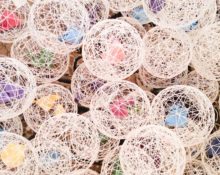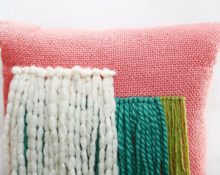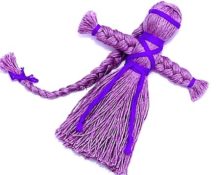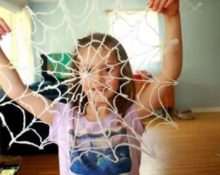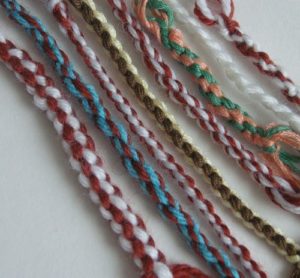 Artists use laces to design many creative works. But they always run out, so you have to go to the store for a new batch. And fashionistas use a variety of laces to decorate their necks.
Artists use laces to design many creative works. But they always run out, so you have to go to the store for a new batch. And fashionistas use a variety of laces to decorate their necks.
However, there is no need to rush, because you can make them from threads with your own hands, showing imagination and creative thinking. Such an activity will not only be useful, but also very exciting.
What you need for work
In order to weave laces at home, we need ordinary threads that can be found in every home. The material can be completely different: wool, cotton and others. You will also need perseverance, patience and a desire to work, then everything will definitely work out.
Lace weaving
Below are ways to weave various laces, varying in complexity and functionality.
How to make a simple chain of loops
The result here is very interesting - the cord itself is very dense and strong, looks like a chain and 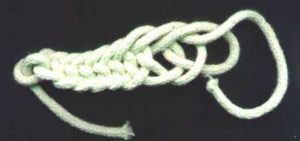 braid Of course, thick wool threads are also suitable for this method.However, the advantage of this method is that it allows you to weave a chain even from the thinnest sewing threads.
braid Of course, thick wool threads are also suitable for this method.However, the advantage of this method is that it allows you to weave a chain even from the thinnest sewing threads.
An additional advantage here is that the chain is woven directly onto the product, unlike other weaving methods.
- The thread needs to be secured to the back of your product.
- Then transfer it to the front and make a small stitch.
- Then pass it through again and bring it to the front side, in this way a loop is formed.
- You need to take the working thread and carefully tighten it into the resulting loop.
- After tightening, you need to intertwine, thus making a new loop.
- The further sequence of actions is the same. We don’t stop until we get the lace of the required length.
Important! Try to create tension in the fabric and secure it. Complete stillness and tension will greatly help you in your work process!
How to quickly make a twisted cord
The twisted version is one of the simplest elements that can be done quite quickly. Advantage 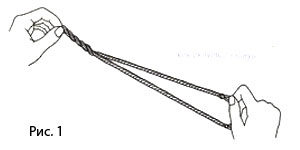 It is also believed that you can make it of any thickness, and also weave threads of different colors. This gives a rather interesting result.
It is also believed that you can make it of any thickness, and also weave threads of different colors. This gives a rather interesting result.
- One side of the thread is fixed, on the other we begin twisting. The stronger the twist and tension, the more turns there will be.
- After this, we connect the sides and bend everything in half, causing the cord to twist on its own.
- The matter remains small. We need to straighten out various bruises and rough spots, and also tie up the knots at the ends of our work so that nothing comes undone.
How to make a cord from elongated loops
In this method, it is better to use only thick threads, preferably made of wool.
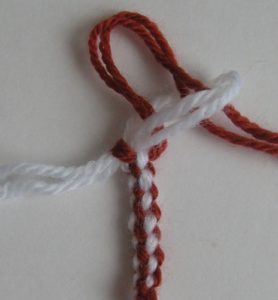
The meaning here is extremely simple. You need to fix the ends and make loops that will need to be threaded into each other.
Important! Always tighten the loop that is on top!
The algorithm is extremely simple, the main thing is not to get confused.
How to make a two-color lace
The result of the work will be impressive - both strength and aesthetics. To work you will need 4 identical threads  thickness, quite large, two colors. The main thing in this method is not to panic at the very beginning of work, when some nervousness appears. After a few steps it will become much easier.
thickness, quite large, two colors. The main thing in this method is not to panic at the very beginning of work, when some nervousness appears. After a few steps it will become much easier.
You need to take two threads of a contrasting shade, tie together and fix to something to make work easier.
The weaving order is as follows: dark threads in front and back, and light threads on the left and right sides. Gradually we twist the dark and light threads in opposite directions.
It turns out that we will weave lighter shades into dark ones. We repeat the process cyclically until the work is completed.
How to make a spiral cord from 2 colors
There are some similarities with the first method.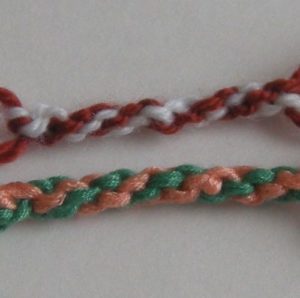
Here our lace will be twisted more tightly, it will be more flexible and durable. 4 threads are also used, the work begins in the same way.
In the first method we interlaced the threads, but here we will need to knit knots, alternating dark and light. As you work, your cord will gradually twist on its own.
It would be great if these tips help you in your crafting! Create, fantasize, everything will work out for you!


 1
1
